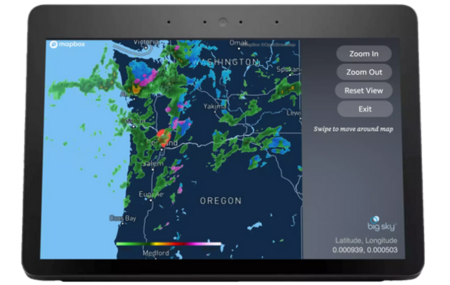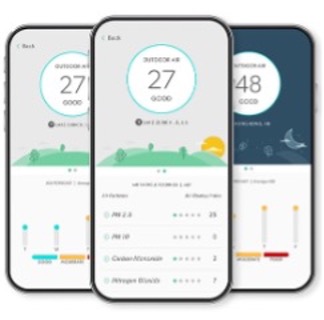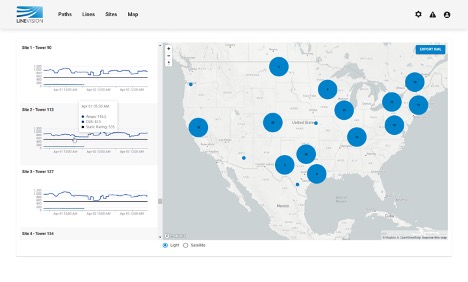Since powering our first customer applications with our weather API, we’ve had a front-row seat to countless compelling and inspiring use cases for weather data and mapping. Without playing favorites, we've rounded up a few of the many applications we loved in 2022. With a mix of consumer and business applications, there’s something here for everyone. We hope these inspire you as you plan your next project!

Xweather mapping integrations in the Big Sky Amazon Echo application
Consumer-focused applications
Industry: Smart home
Use case: Amazon Echo
Client: Big Sky
Big Sky brings voice-activated weather to the Amazon Echo, complete with stunning weather visuals for the Echo Show’s screen - including a screensaver option. Not only are the voice-activated features inclusive of accessibility needs, but the screensaver can save users from the default stream of advertisements otherwise seen on the Echo Show’s lock screen and replace them with beautiful weather radar maps and information.
Industry: Consumer applications
Use case: Outdoor recreation ‑ deer hunting
Client: HuntWise
Like many other outdoor enthusiasts, hunters are very tuned in to the weather. Wind, pressure, precipitation, and temperature are just some of the environmental parameters than can make or break a day in the field. Today’s outdoorsmen and women have taken their hunting experience to another level, with new tools and applications such as HuntWise that leverage complex algorithms to forecast animal movements by species based on weather forecasts.

TrueSense application display for home air quality monitoring
Industry: Internet of Things (IoT)
Use case: Home air quality
Client: TruSens
Monitoring indoor and outdoor air quality is critical in keeping home and work environments safe and comfortable for those with certain health concerns and environmental sensitivities. TruSens utilizes historical, current, and forecast global air quality data within the TruSens Smart App to power real-time notifications, metrics, and automation. For example: If and when the air quality outdoors is poor, TruSens will recommend to, or automatically, shut smart windows, turn on your smart air purifier, and maintain clean and breathable air indoors.
Business-focused applications
Industry: Food & beverage
Use case: Packaging
Client: ButcherBox
Just as ButcherBox raises the bar when it comes to sustainable, top-quality meats for their customers, their custom packaging protocols ensure none of their efforts go to waste due to weather. Accurate weather forecasts, along with machine-learning algorithms leveraging historical end-to-end delivery data, are used to optimize insulation and dry ice. These industry-leading efforts ensure food safety, high customer satisfaction, and less food waste thanks to their smart packaging technology.

LineVision dashboard view
Industry: Utilities
Use case: Energy transmission
Client: LineVision
In most utility markets, electricity has to travel from its source to its end-use customers. This journey through transmission lines has unfortunately led to wildfires — notably, in California and other western states — during extreme weather events. LineVision has taken on the challenge of solving this problem by empowering grid operators with the technology to increase transmission line capacity and optimize grid operations with changes in weather conditions. This increased capacity and reduction in energy congestion allow for the addition of more renewable energy sources on the grid.
Industry: Autonomous transportation
Transforming an industry as colossal as commercial transportation is no easy feat, but that's exactly the aim of Embark Trucks with their self-driving software that can transform any truck fleet into an autonomous one. Leveraging a foundational AI platform, Embark trained their algorithms with 10 years of high-resolution historical weather data for every commercial transit roadway across the continental United States. Today, their technology is used by a number of high-profile fleets for the movement of goods between transfer points via autonomous trucks, in turn creating short-haul jobs for human truckers at both ends of the route.
In Conclusion
Needless to say, there are countless ways to harness weather data and visualizations – and we uncover more every single day in concert with new and existing customers. From life-saving integrations to interactive displays or mobile apps that inspire and delight us, the list of software applications that benefit from weather integrations continues to grow.
